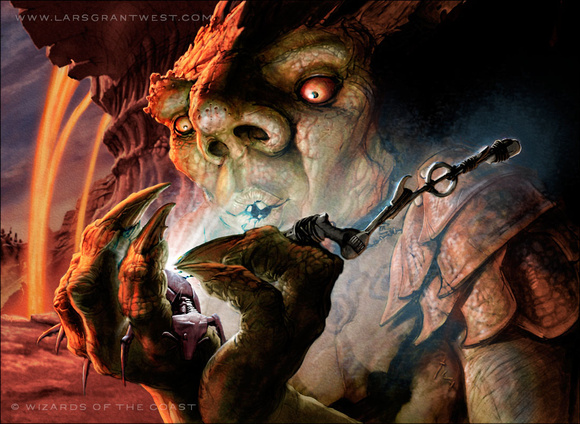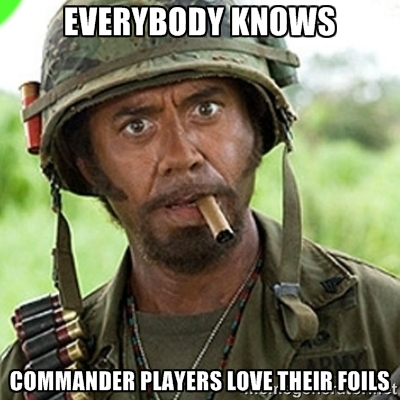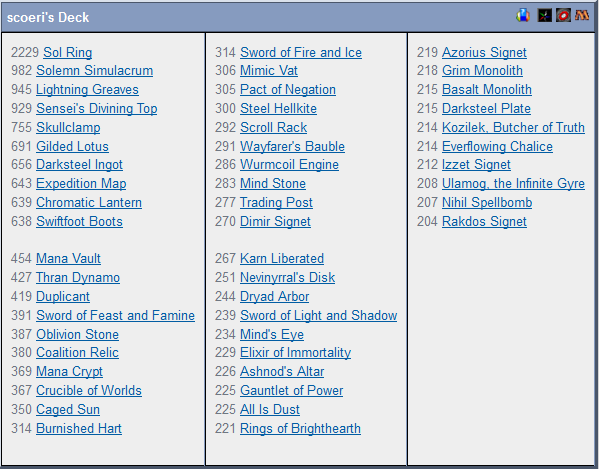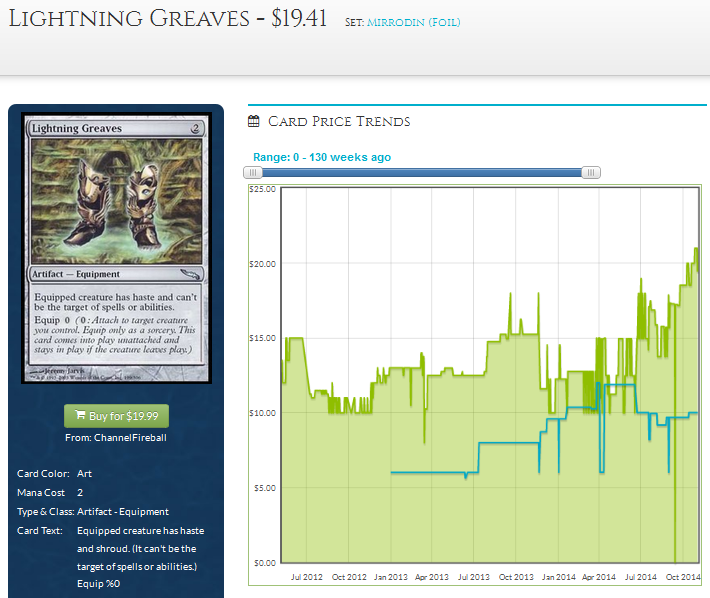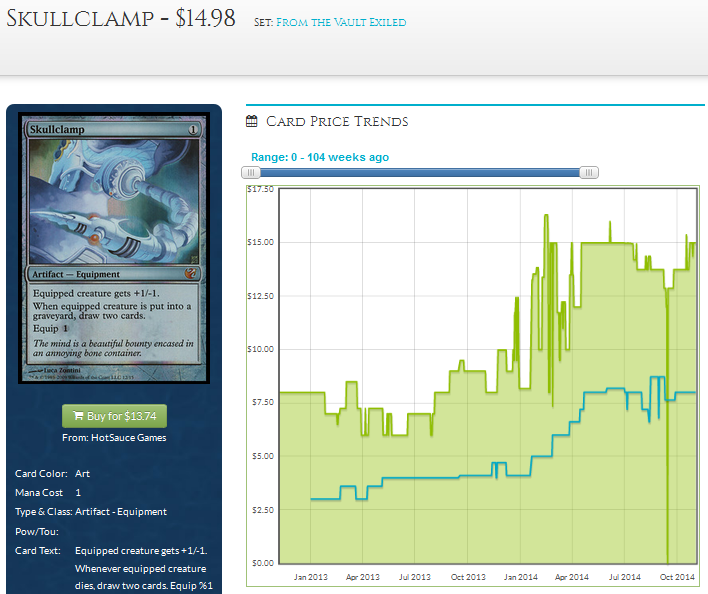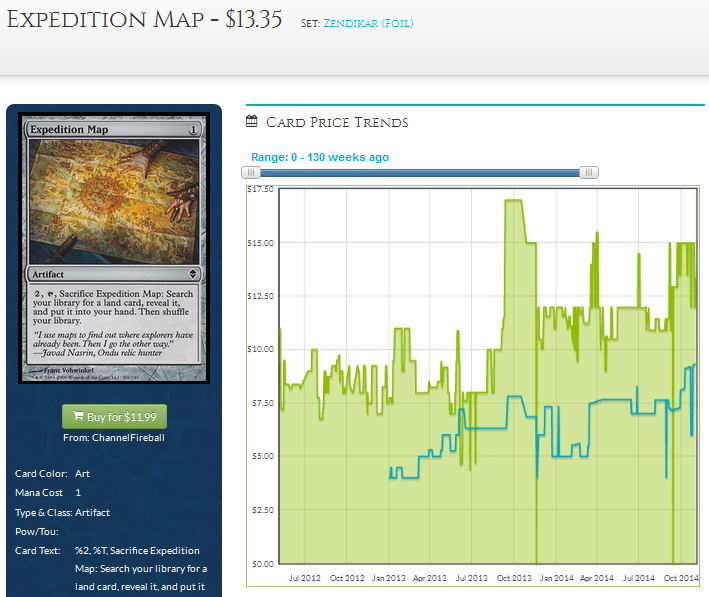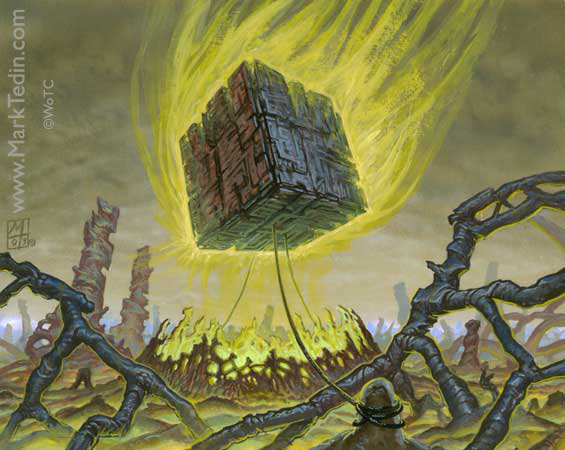Legacy Hero #2
Wow. Just wow.
I would like to thank everyone for such great start. You crushed my expectations!
The results are in! I tried to wait as long as possible before calling a winning deck(I was really hoping for 12 Post) but it became pretty clear early on that Stoneblade was the winner. With over 650 total votes, Stoneblade has 14% of the vote. Here are the top 5 results.
- Stoneblade – 94 votes (14%)
- Miracles – 86 votes (13%)
- Delver (UWR/RUG/BUG) – 68 votes (10%)
- Shardless BUG – 56 votes (8%)
- Show and tell – 52 votes (8%)
This is a great opportunity to explain how similar most of these decks are. Lets look at the staples (other than the dual lands) that these decks have in common.
Force of Will, Brainstorm, Ponder, Spell Pierce, Jace the Mindsculptor, Polluted Delta, Flooded Strand, Misty Rainforest and Scalding Tarn.
We can then compare the cards the Delver variants have in common, then Stoneblade and Miracles. What you’re going to notice is that you can assemble a couple different decks once you get the core together, excluding dual lands. The core is what we’re building our legacy collection around. Force of Will, Dual Lands, Wasteland, Jace, the Mind Sculptor, Fetchlands, etc. These cards are the barrier of entry. I can’t speak for everyone but I know how important they are for people who haven’t had them before. It is a reward in itself to get those cards.
When your focus is on the finance part of Magic, it’s easy to lose perspective. I’m reminded of that every time I trade one of those beat up dual lands that aren’t in any condition to sell outright to someone who just wants a dual land to have one or to maybe build an EDH deck around. Recreating that experience is going to be tough but ultimately rewarding.
The core of the top four decks are very much alike.
Stoneblade:
Polluted Delta
Flooded Strand
Marsh Flats
Underground Sea
Wasteland
Tundra
Stoneforge Mystic
Deathrite Shaman
Vendilion Clique
Brainstorm
Force of Will
Swords to Plowshares
Ponder
Treasure Cruise
Thoughtseize
Spell Pierce
Jace, the Mind Sculptor
Miracles:
Scalding Tarn
Flooded Strand
Tundra
Plains
Volcanic Island
Vendilion Clique
Brainstorm
Force of Will
Swords to Plowshares
Spell Pierce
Jace, the Mind Sculptor
RUG Delver:
Wasteland
Scalding Tarn
Tropical Island
Volcanic Island
Polluted Delta
Flooded Strand
Force of Will
Brainstorm
Tarmogoyf
Treasure Cruise
Ponder
Spell Pierce
Shardless:
Polluted Delta
Underground Sea
Tropical Island
Misty Rainforest
Wasteland
Tarmogoyf
Deathrite Shaman
Brainstorm
Force of Will
Thoughtseize
Jace, the Mind Sculptor
By identifying the staples, it allows us to branch out into different decks at a later point. For example, the core of Esper Deathblade will work well enough to make Patriot Delver. Here is a copy of a stock Deathblade list (SCG Worcester Ben Glancy).
4 Polluted Delta
4 Flooded Strand
3 Marsh Flats
3 Underground Sea
2 Wasteland
2 Tundra
1 Tropical Island
1 Scrubland
1 Karakas
4 Stoneforge Mystic
4 Deathrite Shaman
2 True-Name Nemesis
1 Vendilion Clique
4 Brainstorm
4 Force of Will
4 Swords to Plowshares
4 Ponder
3 Treasure Cruise
3 Thoughtseize
3 Spell Pierce
SIDEBOARD
1 Vendilion Clique
1 Liliana of the Veil
1 Jace, the Mind Sculptor
1 Supreme Verdict
2 Zealous Persecution
1 Relic of Progenitus
1 Surgical Extraction
1 Flusterstorm
2 Meddling Mage
1 Sword of Feast and Famine
1 Grafdigger’s Cage
1 Pithing Needle
1 Thoughtseize
A quick look through the deck tells me that there’s a handful of cheap cards that I’ll be able to snag easily. Spell Pierce, Ponder, Brainstorm, Treasure Cruise, Swords to Plowshares, Grafdigger’s Cage, Pithing Needle, Zealous Persecution, and Relic of Progenitus are all under a couple of bucks but we need to focus on the main deck cards here. Spell Pierce, Brainstorm, Treasure Cruise, and Swords to Plowshares. I can pick most of them up as throw-ins for trades.
It’s great that they reprinted fetch lands in Kahns. It levels the playing field and lowers the barrier of entry. Let’s look at the price of a Polluted Delta
Look at the price difference between the two. The original Delta was $75+ for well over a year. The Khans Delta has been trending down for a while, making it an easy pickup. I’m big on picking up blue fetches as a long term spec, but I would suggest to anyone wanting to play Eternal formats to pick up a playset of each fetch while they’re low. If you’ve ever looked at the trajectory of shock land prices, it makes sense. Getting them now will – obviously – save you money in the future.
What about the card that defines Legacy – Force of Will. I would like to quote Drew Levin; “Force of Will is the glue that holds Legacy together. Any outlaw can roll up to a tournament with Lion’s Eye Diamond, Show and Tell, Reanimate, or Glimpse of Nature, so it’s up to the sheriffs and their Force of Wills to hold combo maniacs at bay. Force of Will is a weak card on its face, but it is the only reliable counterspell that can be cast on your opponent’s first turn. In a format that is filled with a huge range of powerful spells, Force of Will is your catchall answer. No tempo or control deck is viable without Force of Will.”
Financially speaking, Force of Will isn’t on the reserved list. It could very well be reprinted eventually, other than the judge promo. Trading for them is hard – people that have them keep them. Buying them from a store is non-optional if you’re trying to get out cheap. Floor traders are a good option for gently used (sleeve playable) cards. We can move the stuff that will rot in the trade binder to them for a card that is more in the acceptable price range.
Finally, we have the mana base. The most expensive part of the deck.
3 Underground Sea
3 Tundra
1 Tropical Island
1 Scrubland
1 Wasteland
1 Karakas
4 Polluted Delta
4 Flooded Strand
3 Marsh Flats
That totals over $1700! Fortunately, the prices of the dual lands are, for the most part, consistent. They’ll creep up in price, but you can always find a deal if you’re flexible on things like condition or you’re paying cash. You can always find someone that will trade you a Tundra for your standard and modern staples, but they’re, “trading down,” so they ask for additional, “value,” for doing it. That idea makes me sick to my stomach. I shouldn’t feel like I’m financing a damn 1994 Windsor Woody Wagon from a, “NO CREDIT NO PROBLEM,” car dealer when I’m buying my cards. I’d much rather search and work harder to find someone more amicable than to deal with a loan shark. That relationship with a better trader will pay off in spades over time. Speaking of which… find a reliable trading source!
It’s going to take a lot of work to get dual lands together.
As of right now, my trade binder doesn’t have nearly enough value. It is like Oliver Twist asking for more porridge. I’m going to be attending a local shop’s, “Duel for Duals,” which is self-explanatory, later this month. These kind of local-ish events are great. Not only do I have a chance at winning expensive cards but it showcases my binders to people that I don’t normally get to interact with. It is a great way to move the midrange casual cards that my locals have already pawed through. I will grind these kind of events whenever possible. The equity that it could add to my trade binder makes the travel well worth it.
How can we make our current resources work for us? Playing a different standard deck is a good start. I was watching the SCG Oakland coverage over the weekend when I noticed that sick Jeskai Heroic Combo deck. I priced it out against my current deck (Jeskai Aggrohttp://tappedout.net/mtg-decks/04-11-14-pRo-jeskai-aggro/ )and it looks like I can add about $200 to my binder by switching things up. Maximizing available resources is huge!
Now that I know that the people have spoken and Stoneblade is the choice, I will be able to go to FNM this coming week and trade with purpose. I’ll also be uploading the contents of my trade binder to mtgprice.com so everyone can learn, see changes, trades and my current value.
I want to thank everyone that is along for the adventure so far, and I hope to see you in the coming months.
You can email me at mtglegacyhero@gmail.com and follow me on twitter @somethingsays #legacyhero and of course comment on the article. Don’t forget to pass along any sick deals.
I want to give a shoutout to hipstersofthecoast.com for the pingback.
Here is a link to Drew Levin’s intro into Legacy.
http://www.starcitygames.com/article/27449_How-To-Get-Into-Legacy-Part-1.html
http://www.starcitygames.com/article/27493_How-To-Get-Into-Legacy–Part-2.html
ADVERTISEMENT: Grimoire Beta Edition – A brand new deck box to intrigue your inner blue mage. Looking for a deck box to match your play style and personality. Look no further! Check out the Grimoire Beta Edition – a spell book looking deck box with stylish cover art that fits you.
